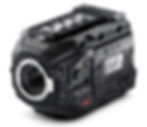Why Blackmagic Cameras are Taking Over
- Adam Garcia
- Dec 27, 2018
- 4 min read
Links contained in this blog are affiliate links. While this doesn't affect the price, I do however receive commission if you buy the product using the link.
Blackmagic was introduced to the world in 2001 and has only recently been gaining popularity in the cinema world. Now they are one of the major contributors in the cinema world. Why is that? Let me tell you why.
As a filmmaker, I’m always looking for equipment that can help me tell my story. Of course, people will go straight to the other known brands like Red, Canon, and Alexa, but let’s be honest, most of us will never be able to afford most of their products. Yeah, we can stick with the C100, but would you really want to use that camera as a primary instead of a more commercially friendly camera that can do so much more?
As a filmmaker, you can settle with the DSLR look and try your best at recording live events that last up to 3 hours like I do, but I honestly don’t feel that DLSR bodies are a good fit for those events. DSLR cameras are good for small clips with controlled lighting and not a live production to use for a DVD. You see tons of DSLR footage for bands on tour, but you won’t see a straight up DLSR live DVD produced by a band. Even major bands will choose a commercial video camera over a DSLR any day because they know the value of investing in real equipment instead of run and gun cameras.
This is where Blackmagic comes in. They wanted to produce a piece of equipment that will satisfy the look of DSLR while accommodating people like me who want to use it for commercial events. While there still are some quirks here and there, you get an amazing image while giving us the option for live broadcasting. Not many DSLR’s are capable of continuous recording and broadcast quality output’s because they aren’t made for that. People can try to do that with DSLR’s all they want, but eventually the camera will either overheat or they’ll realize that the output image won’t be as good as a dedicated camera like the ones that Blackmagic puts out.
The most popular camera they've produced is the Blackmagic Design Cinema Camera. This camera films in 2.5K and it has a 13 Stop Dynamic Range. It's super versatile and you can buy a separate cage to fit all kinds of attachments like monitors, microphones, lights, follow focus and more!

If this setup is too big for your needs, you can also look at the Blackmagic Pocket Cinema Camera with Micro Four Thirds Lens Mount. This is incredibly lightweight and is perfect for those nature enthusiasts and for those who like to film in remote locations. It has a 3.5 LCD screen that allows you to monitor your shot while you're shooting and it also films in 1080p. Not quite as high def as most cameras, but it's great for the size that it is. Plus, most viewers don't have 4K viewing equipment yet since it is so expensive so 1080p is plenty for now.

Now if either of these previous cameras are too small for your production, you can go with the infamous Blackmagic Design URSA Mini Pro 4.6K Camera. This bad boy is taking over in the studio and on location for short films and even some major motion pictures. This has a 4.6K Super-35mm CMOS Sensor and it can film up to 60 fps. It has a full set of external controls and built in ND Filters. This can also record to either SD cards or an SSD Hard Drive! The Mini Pro is about $1000 more expensive than it's predecessor, the full body URSA 4K Camera with a 10" monitor, but it's also lighter and easier to work with according to most users.

Now if you're in a broadcasting studio and you'd like to get your hands on a cinema camera like this but don't need all the bells and whistles that come with these other cameras, fret not! Blackmagic has come out with a broadcasting camera called the Blackmagic Design Studio Camera 4K V2. This camera is meant to be used for live broadcasts and it can be connected to multiple cameras for multi-camera angles! It features a massive 10" viewfinder and it has accessory ports so you can connect things like a teleprompter, extra microphones and even headsets so you can talk to the production crew in another room. Of course you'll have to buy the broadcasting equipment that you'll need to connect all this stuff, but the options are there.

Blackmagic is providing equipment that allows its users to have a wide range of uses across virtually every spectrum of the film industry. Let’s be grateful that we have a company in this generation that wants its users to be versatile in their filming instead of hindering them with products that will only allow them to do certain things and buy more (expensive) accessories that only allow them to do very little.
